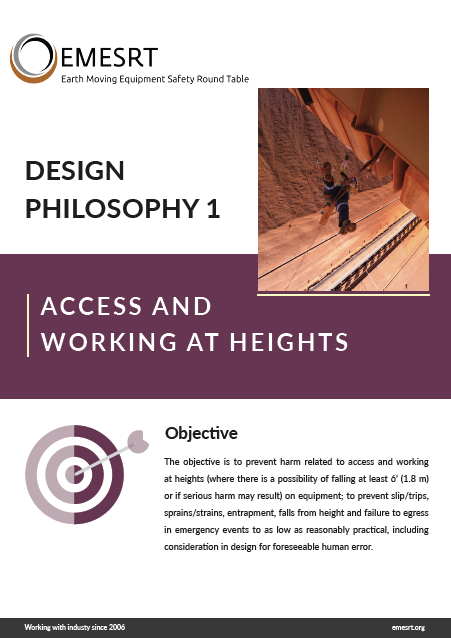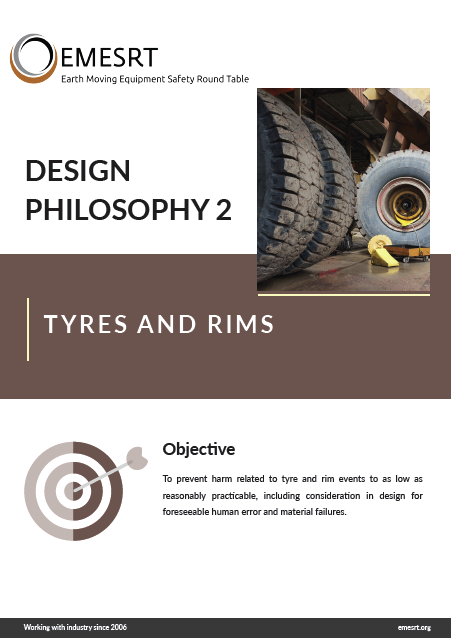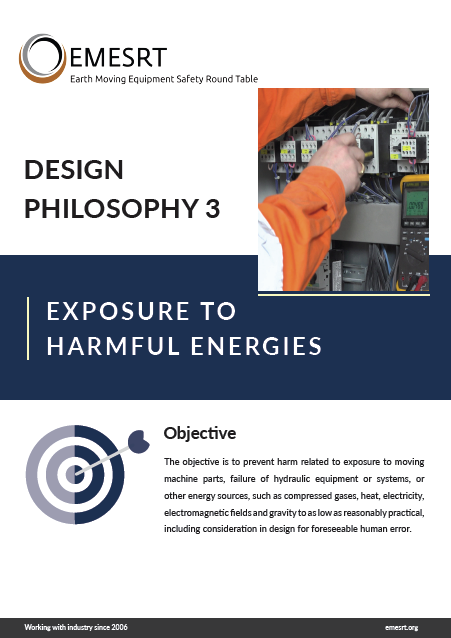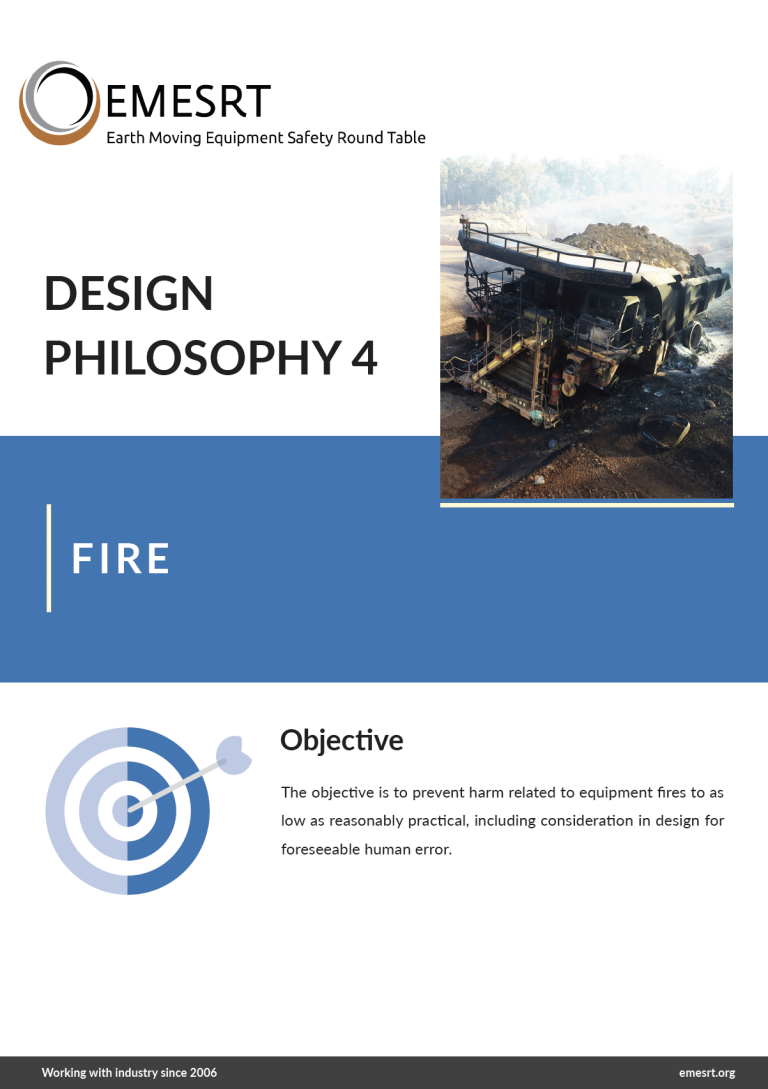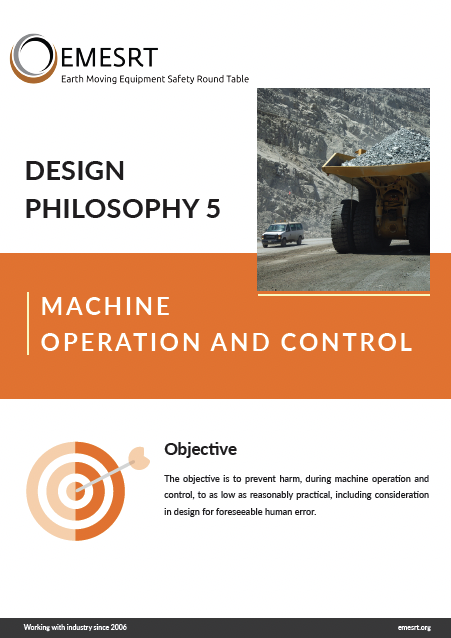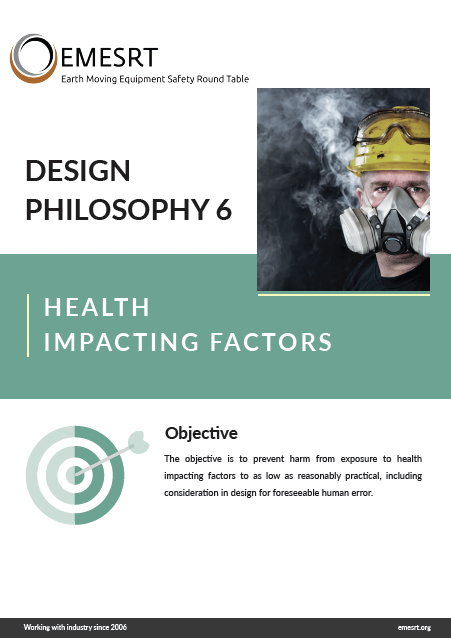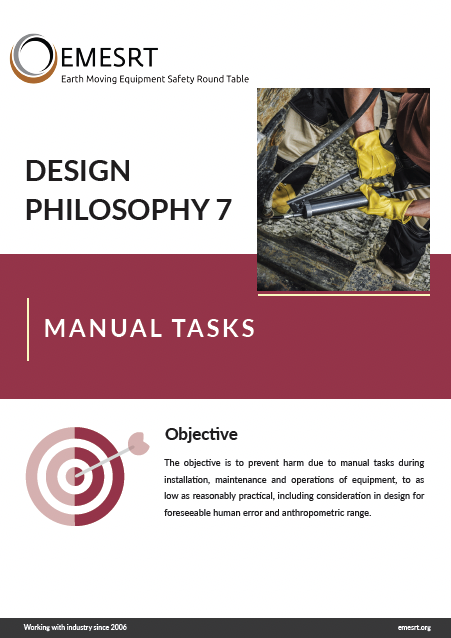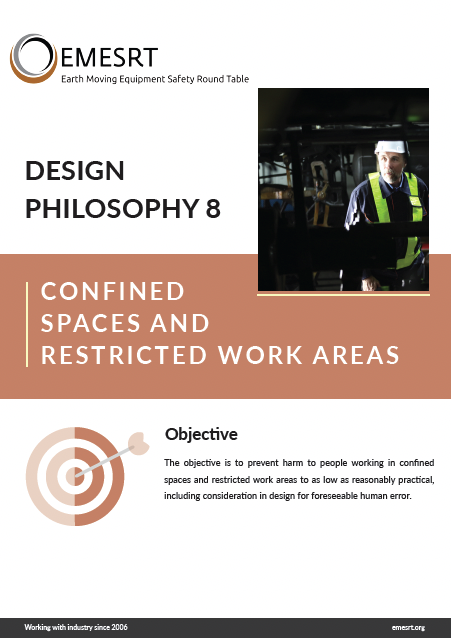Design Philosophies
EMESRT published a unified set of Design Philosophies (DP’s) for earth moving equipment used in mining operations. The DP’s provide an overall understanding of the material problems that create unwanted exposure that users encounter, with an emphasis on human-centered design deficiency aspects.
In 2023, the EMESRT Advisory Group reviewed all eight design philosophies with respect to human factors design diversity and the introduction of alternative energy/powered earth moving equipment. The group will finalise and publish the updated design philosophies in 2024.
Design Philosophy 1: Access and working at heights
The objective is to prevent harm related to access and working at heights (where there is a possibility of falling at least 6’ (1.8 m) or if serious harm may result) on equipment; to prevent slip/trips, sprains/strains, entrapment, falls from height and failure to egress in emergency events to as low as reasonably practical, including consideration in design for foreseeable human error.
For example, injury during access to equipment and its routine service and inspection pints, work platforms and operator workstations due to poor location of service and inspection points, etc.
Design Philosophy 2: Tyres and rims
The objective is to prevent harm related to tyre and rim events to as low as reasonably practical, including consideration in design for foreseeable human error and material failures.
For example, harm due to uncontrolled release of pressure from the tyre and rim assembly during operation and maintenance.
Design Philosophy 3: Exposure to harmful energies
The objective is to prevent harm related to exposure to moving machine parts, failure of hydraulic equipment or systems, or other energy sources, such as compressed air, heat, electricity and gravity to as low as reasonably practical, including consideration in design for foreseeable human error.
For example, harm from exposure to energies such as heat, electricity, radiation, compressed air, high pressure fluids (including hydraulic fluids) and falling objects.
Design Philosophy 4: Fire
The objective is to prevent harm related to equipment fires to as low as reasonably practical, including consideration in design for foreseeable human error.
For example, harm from fire arising from damage (including heating, melting and chaffing) to electrical cables and components, hydraulic hoses and fuel lines due to design inadequacies including poor location, inadequate separation of fuel and ignition sources, and flaws in clamping or restraints.
Design Philosophy 5: Machine operation and control
The objective is to prevent harm, during machine operation and control, to as low as reasonably practical, including consideration in design for foreseeable human error.
For example, musculoskeletal injury or illness due to workstation design (including seat and seatbelt design, openings and cab height) that promotes biomechanically compromised postures for the 5th percentile female to 95th percentile male body dimensions.
Design Philosophy 6: Health impacting factors
The objective is to prevent harm from exposure to health impacting factors to as low as reasonably practical, including consideration in design for foreseeable human error.
For example, harm from exposure to health hazards such as extreme temperatures, excessive vibration and noise levels, particulates, gases and vapours within the operating workspace; and musculoskeletal factors due to poor ergonomic design of equipment and controls.
Design Philosophy 7: Manual tasks
The objective is to prevent harm due to manual tasks during installation, maintenance and operations of equipment, to as low as reasonably practical, including consideration in design for foreseeable human error.
For example, musculoskeletal injury from exposure to risk factors such as forceful exertion, awkward or static posture, repetition or prolonged duration, and hand-arm and/or whole-body vibration due to manual tasks associated with installing, operating and maintaining the equipment.
Design Philosophy 8: Confined spaces and restricted work areas
The objective is to prevent harm to people working in confined spaces and restricted work areas to as low as reasonably practical, including consideration in design for foreseeable human error.
For example, asphyxiation from irrespirable atmosphere due to lack of adequate ventilation.


